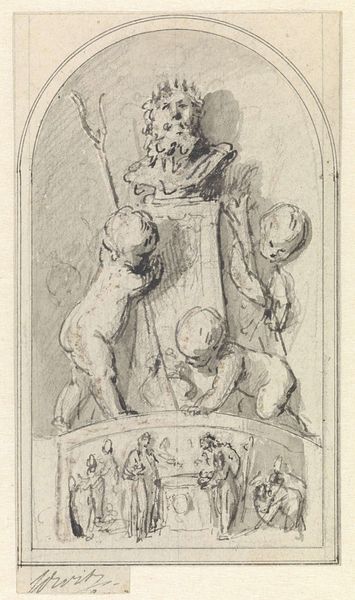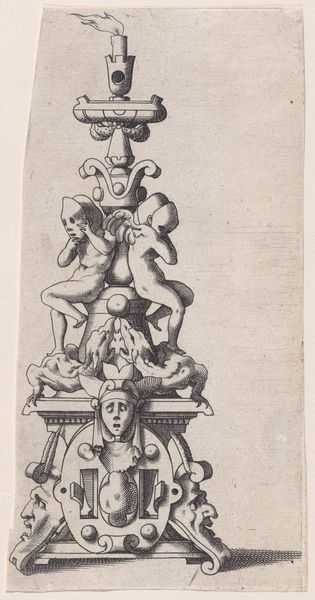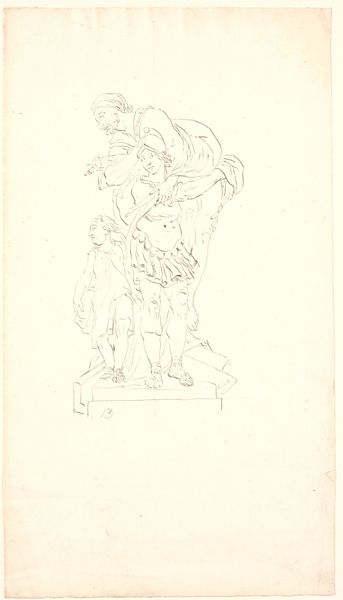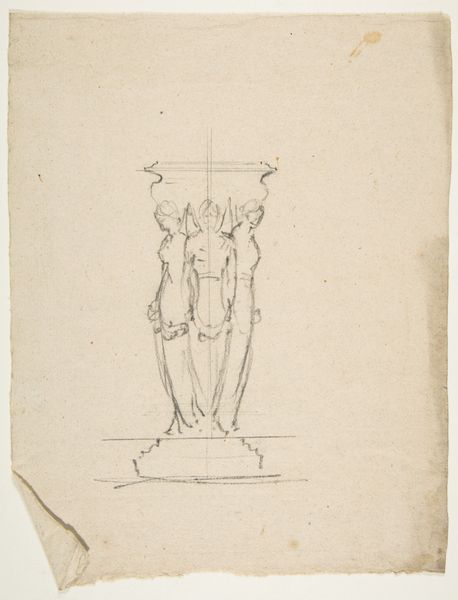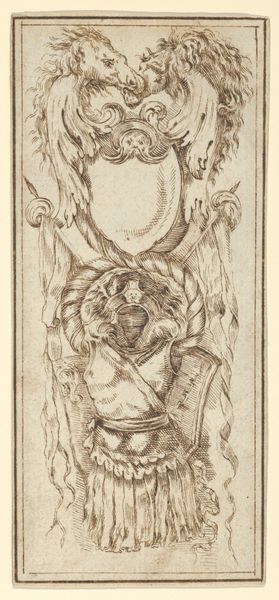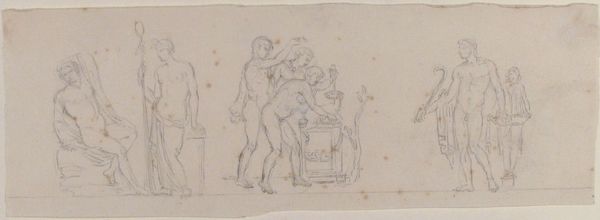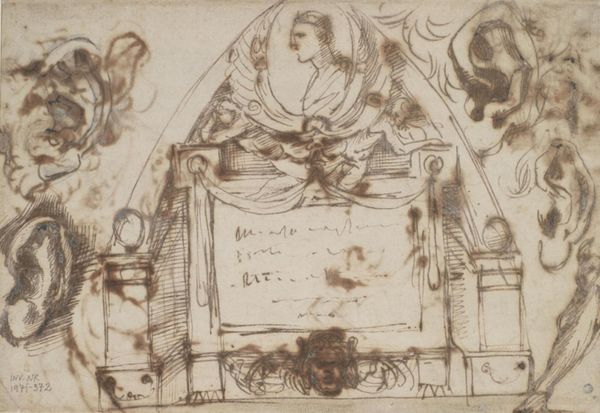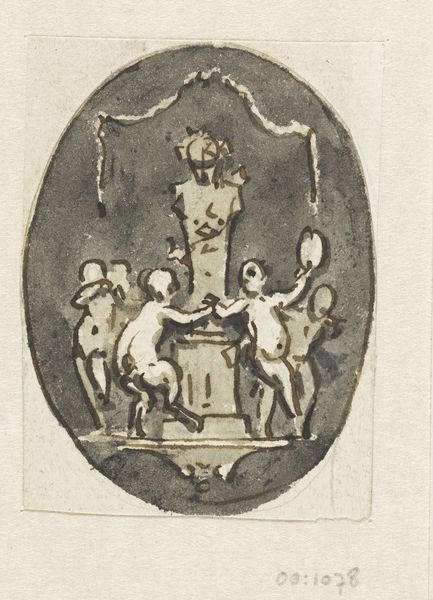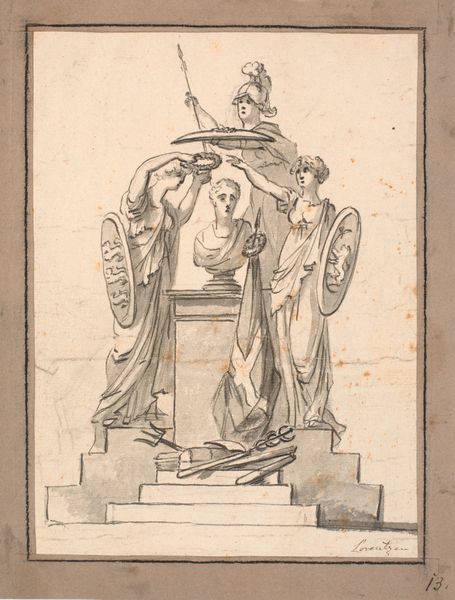
drawing, print, pencil
#
drawing
#
neoclacissism
# print
#
landscape
#
pencil
Dimensions: 6 7/8 x 7 11/16 in. (17.5 x 19.5 cm)
Copyright: Public Domain
Curator: Here we have an anonymous design for a fountain, created sometime between 1700 and 1800. It’s a neoclassical landscape drawing in pencil, printed in a reddish-brown ink. What are your first impressions? Editor: I am struck by the almost melancholic feel of this piece. The monochromatic hue combined with the repetitive figures gives a sense of quiet contemplation, or perhaps even resignation. It evokes the themes of burdens and unequal distribution. Curator: An interesting take. As a design piece, consider the craft. Notice the symmetry—how it employs the red chalk technique to achieve form. What sort of labor would have gone into producing this print, how many iterations to get to the final reproduction, and what its intended audience would have consumed through these images. Editor: The design absolutely evokes Roman ideals. We see figures drawing inspiration from antiquity. Are they heroes or simply idealized versions of men tasked with upholding civilization? In its social context, designs such as these served to instruct an aspirational upper class on themes of labor. Curator: Indeed, Neoclassicism revived the art of antiquity and this piece serves as a means to consider the consumption of visual art for public projects and spaces, with an idea of classical ideals in an accessible manufactured version of drawing to further advance new technologies. Editor: And yet, thinking about those classical ideals now—can we extract them, pure, without examining whose shoulders these societal beauties were built on? To whom were those fountains actually serving in this historical moment? It also makes me reflect upon the social history present during that era. How does its representation impact current ideas surrounding male forms in the canon? Curator: I would venture that by considering the materiality here – its manufacture, consumption, function and aesthetic - can reveal much about the society in which it was circulating as opposed to simply regarding it as a mere artwork to be beheld without awareness. Editor: I appreciate that point. Engaging with the art from a social and historical context helps me understand the nuances in its construction. The past is, by its nature, embedded into our future; so its relationship to society requires that we consider all sides in relation to the artwork's original goal.
Comments
No comments
Be the first to comment and join the conversation on the ultimate creative platform.


